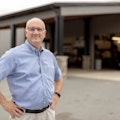When I began turning wrenches in the 1970s, the auto repair business model looked very different. Much of the business centered around hard-line engine and mechanical repairs that required an individual with a specific skill set. As time progressed, so did changes in technology. Unfortunately, increased reliability had a downside for the business of auto repair and fewer breakdowns translated to less revenue. The increase in reliability of some components combined with an increased availability of cheaper imported assemblies like alternators and starters prompted a desperate need for a change in the business model.
Enter the Paradigm Shift
A lot of shop owners are about to relive a paradigm shift without even knowing it. By definition, a paradigm shift is “a fundamental change in approach or underlying assumptions.” Perhaps the lessons we must learn begin with a very famous paradigm shift in an industry that is not that different in many ways than our own: watchmaking. Back in the 1970s and 80s, the Swiss watchmaking industry was a powerhouse, built on a centuries-old tradition of intricate, handcrafted mechanical movements. Their business model was rooted in precision, utilizing highly skilled labor and the predictable need for a service on a fairly routine basis (sound familiar?). Then in December 1969, a company called Seiko dropped a bomb with the first mass-produced quartz watch. This wasn’t just a new product; it was a technological and economic tidal wave. This game-changer was cheap to produce, more accurate than any mechanical watch, and required nothing more than an occasional battery swap. By every objective measure of function, it made the mechanical watch obsolete.
Similarly, mechanics who were experts at rebuilding carbs and tuning engines for performance weren't needed or valued as the industry shifted its focus and embraced the automotive maintenance business model. The best and the brightest weren't necessary because the maintenance model relied on scalability which required only mediocre to average personnel who were capable of being trained to a minimum standard. This reliance on “average” talent meant that one of the biggest corporate expenses (labor) could be kept low to help the bottom line.
Additionally, aftermarket equipment manufacturers rushed to make it easy for services to be performed that were seldom recommended by the vehicle manufacturer. This quest to achieve scale and keep profits high while maintaining low labor expenses begat what is frequently known in our trade as wallet flushing. Nearly every fluid on a vehicle was ripe for a “fluid exchange” under the guise of increasing reliability or component longevity. There was no evidence to support these arguments. For more than two decades, this business model flourished because cars were generally built better than their predecessors. But embracing technology can bring unintended consequences. As newer vehicles and their systems increased in complexity, many of the opportunities that were present to make a fast buck through fluid flushing began to decline. It's tough to flush power steering fluid when the vehicle isn't equipped with it. Even “standard repairs” like brake service occur less frequently on hybrid powered vehicles due to regenerative braking.
A Renewed Need for Expertise
Then what is failing? The current wave of technological “advances.” Cars have now become less reliable and less repairable all while simultaneously becoming less affordable. If history teaches us anything about human nature, there are going to be shop owners who will scoff at the idea that the current maintenance model is becoming a little less viable with each passing day. That's okay, the Swiss watch industry scoffed, too, until the Japanese made them irrelevant. They will likely claim that all machines, no matter how well engineered or assembled, will require maintenance and they will be right except the scalable, minimally skilled employee won't be able to perform the work, and those that possess the talent that can, will certainly command higher wages than most are currently being paid. The future of our trade is about diagnostics, specialization, and high-tech repair. So gear up, train up, or get left behind.
About the Author

R. Dutch Silverstein
Owner
R. “Dutch” Silverstein, who earned his Accredited Automotive Manager Certificate from AMI, owned and operated A&M Auto Service, a seven-bay, eight-lift shop in Pineville, North Carolina for over 25 years.
Dutch was a captain for a major airline earning type ratings in a variety of aircraft including the Boeing 767/757, 737, 200, 300, and 400 series, Airbus 319/320/321, McDonnell Douglas MD80/DC9 and Fokker FK-28 mk 4000 and 1000. After medically retiring, he transitioned his part-time auto repair business into a full-time occupation.
